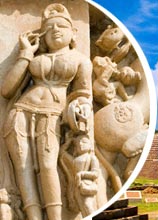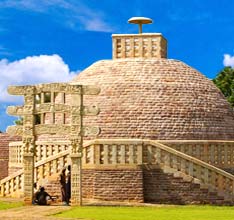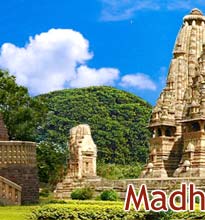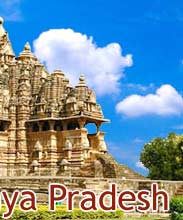Khajuraho is a small village situated in the
Bundelkhand region of Madhya Pradesh. Creativity spurts out from every
single alcove of the region, in the form of its renowned group of
temples. These striking monuments were constructed during the reign of
the Chandela Dynasty and due credits goes to the Chandela Rajputs for
presenting them to the world and highlighting the vast expanse of
India's artistic wonders. Declared as a World Heritage Site, these
inventive monuments attract large flocks of tourists to the place. The
following article will help you to get a glimpse of the weather and
climate of Khajuraho and also aid you in choosing the ideal time for
visiting it.
Summer
Khajuraho enjoys typical continental type of climatic conditions. The
climate during the summer (April to June) is extremely hot and the sun
bakes you mercilessly all throughout the day. The maximum temperature
reaches an unbearable height of about 45oC. Nevertheless,
there can be drastic fluctuations in day and night temperature levels.
The heat gets mild and the mercury level falls to a minimum of 21oC
with nightfall.
Winter
Winters generally last from November to February and typical
continental climate is witnessed during these months. The days are
comparatively warmer, with the maximum temperature reaching about 32oC.
However, the nights can be quite cold and chilly, with the mercury level
dipping to as low as 4oC. Winters are generally fog-free and
dry. The winter months are also the best time to visit the place, as
winter heralds the 7-day long, Dance Festival of Khajuraho.
Monsoon
Monsoons last for a period of three months. From July to September, the
place experiences heavy monsoon showers. The average rainfall is
recorded at about 45 inches. The humidity also gets very high, with the
frequent spells of drizzle. Though the place blooms with a new vigor,
the season is suitable for staying indoors. So, the best time to visit
the place is right after the monsoon season or during the winters
(october and March).









